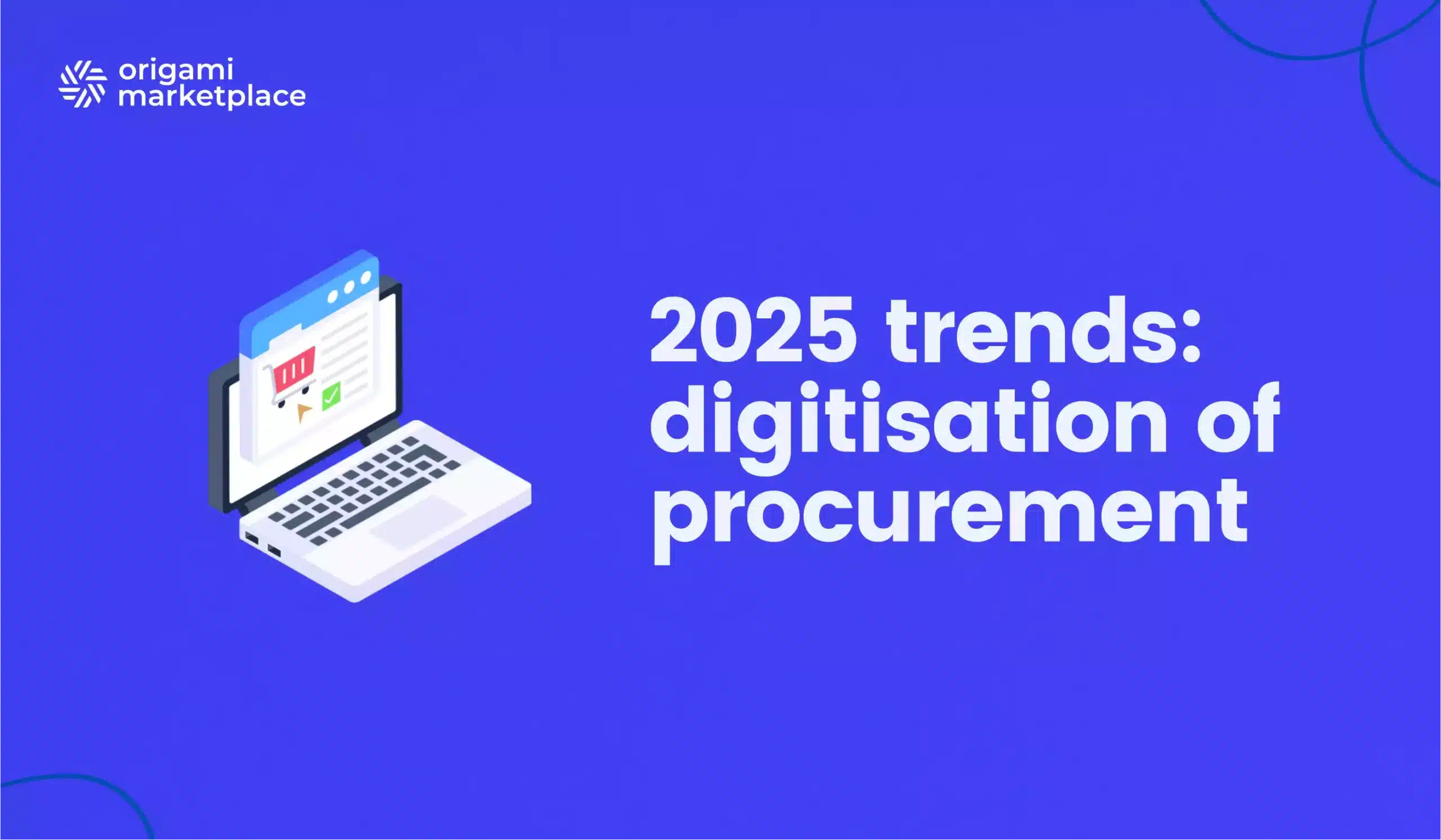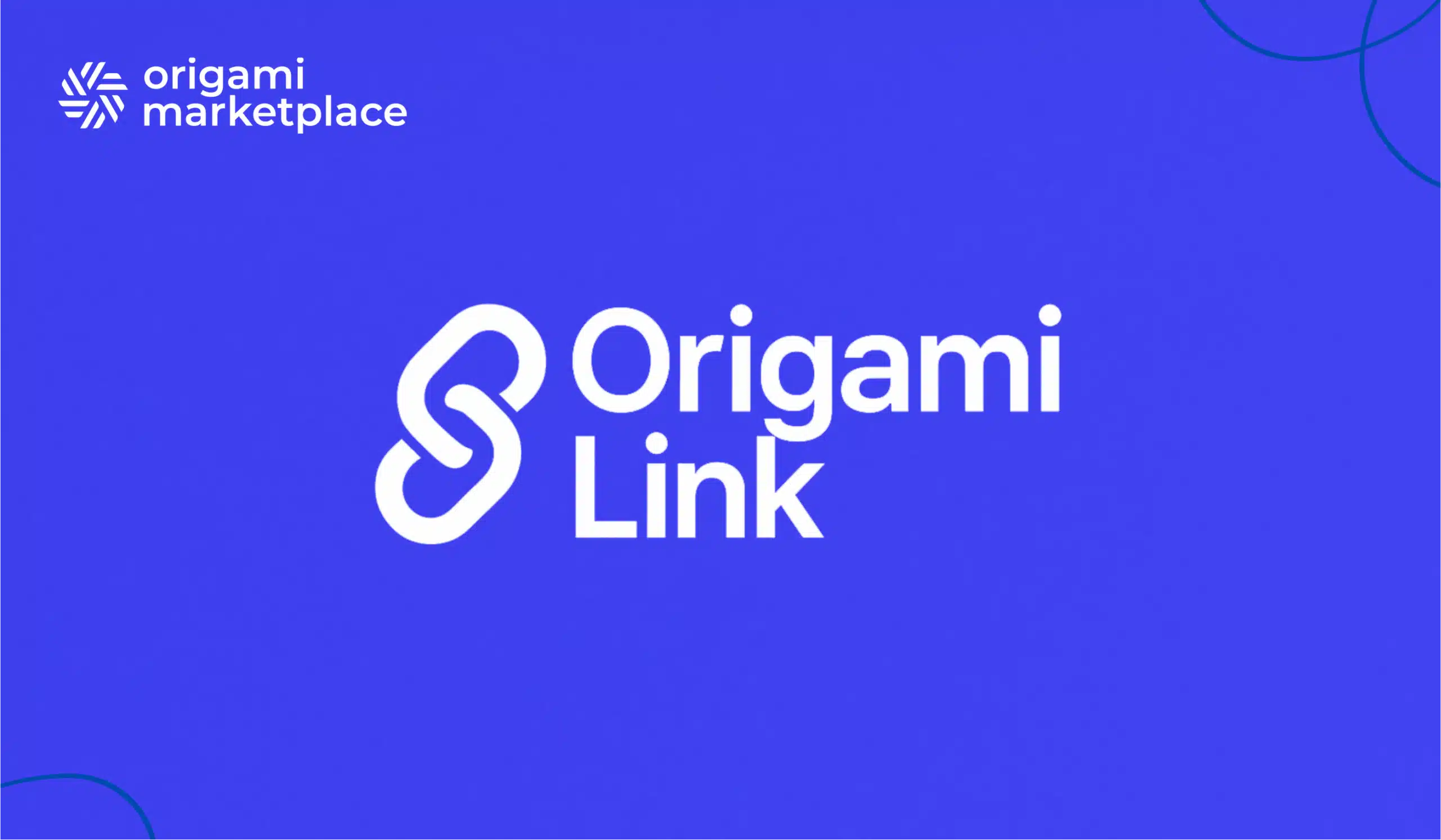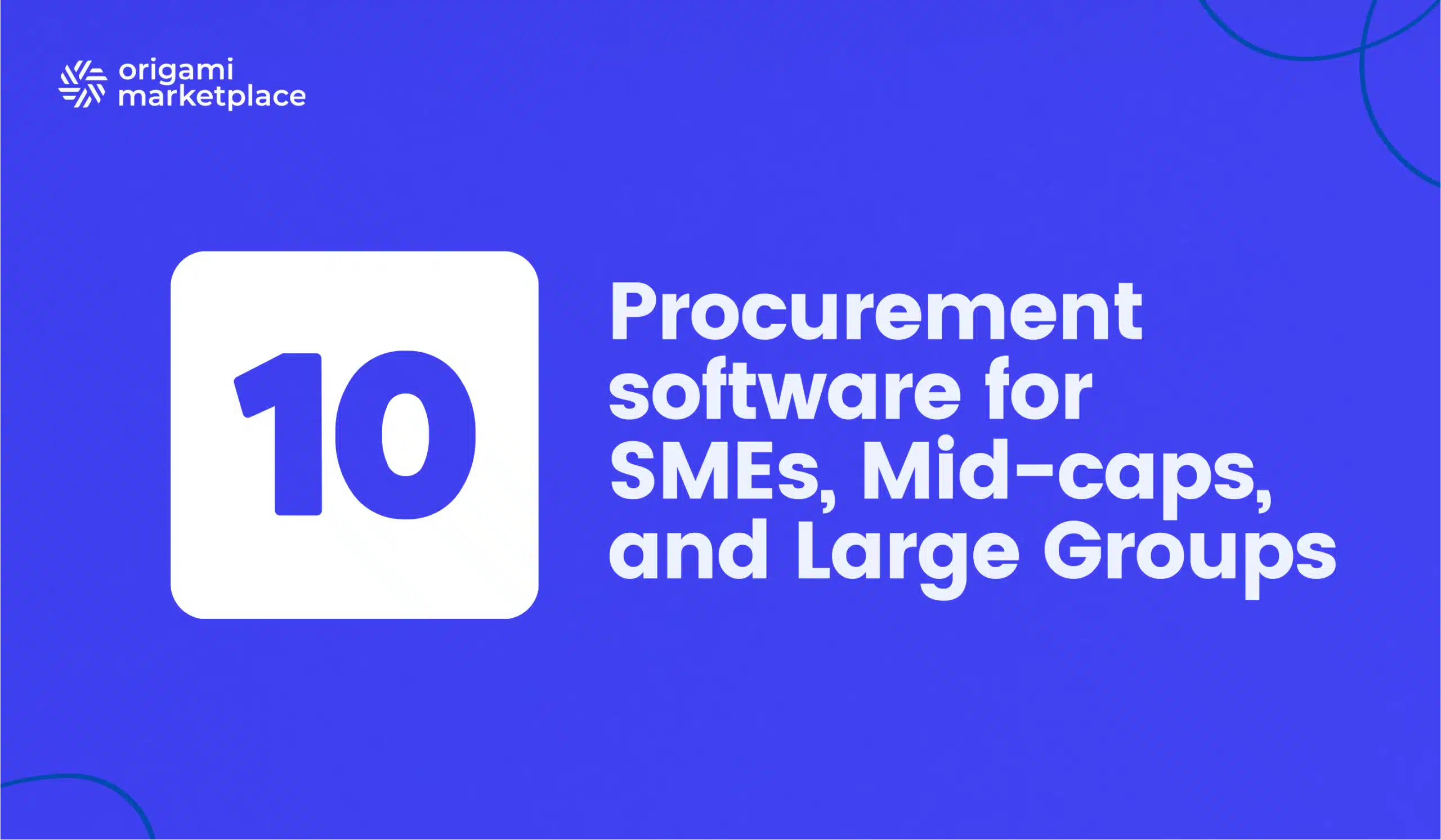The digitalisation of procurement: 5 major trends for 2025
- Emeline Kerloch
- 6 minutes de lecture

The world of procurement is constantly changing, forcing departments to anticipate these changes in order to remain strategic. By 2025, major trends will have redefined the procurement function, making it smarter, more agile, and more responsible. At the heart of this evolution is the procurement marketplace, which is establishing itself as an essential tool for your digital procurement strategy.
This article explores five key procurement trends for 2025 and the pivotal role of the procurement marketplace.
- Hyper-personalisation and intelligent automation through AI.
- La prise de décision éclairée par les données (data-driven procurement)
- L’impératif de durabilité et l’intégration des critères ESG
- La construction de chaînes d’approvisionnement résiliantes et agiles
- L’expérience utilisateur et la collaboration au cœur de l’adoption
1. Hyper-personalisation and intelligent automation through AI.
Artificial intelligence (AI) and generative AI are concrete drivers of transformation for procurement, paving the way for greater automation and personalisation.
AI as a driver of transformation: from automating repetitive tasks to informing strategic decision-making.
AI and machine learning have become essential tools for automating time-consuming tasks. By 2024, 76% of purchasing organisations were planning to use AI, with 92% of CPOs assessing the potential of generative AI. According to BCG, artificial intelligence can reduce the time spent on basic tasks by up to 80% and automate up to 75% of purchasing tasks. This evolution has progressed from being a competitive advantage to becoming an operational necessity, enabling buyers to prioritise strategy and supplier relationships. Generative AI is transforming content creation and data synthesis.
AI is becoming a cognitive partner that automates tasks, provides predictive analytics, and actively assists with creation and understanding, effectively transforming into a “digital colleague”.
Specific use cases include supplier selection, negotiation, contract management and predictive risk and cost analysis.
AI has an impact on the entire procurement cycle:
- Supplier selection and evaluation involves data analysis to assess performance, reliability, and Environmental, Social and Governance (ESG) compliance. Generative AI can identify sustainable suppliers.
- Negotiation: AI agents can conduct negotiations and quickly draft personalised communications.
- Contract lifecycle management (CLM): Review, risk analysis and compliance monitoring are automated.
- Predictive analytics anticipates trends, identifies risks (reducing them by up to 50%) and optimises costs (achieving savings of up to 15%). Companies such as IBM and Amazon have achieved substantial improvements in forecasting, costs and cycle times thanks to AI. AI enables the hyper-personalisation of purchasing strategies at scale, with tailored approaches for each supplier and transaction.
| Functions | Applied AI/Generative AI capabilities | Expected benefits |
|---|---|---|
| Expense analysis |
|
|
| Strategic sourcing and supplier selection |
|
|
| Negotiation |
|
|
| Contract management (CLM) |
|
|
| Supplier risk management |
|
|
| Indirect procurement / tail spend |
|
|
| Procure-to-pay (P2P) process |
|
|
Artificial intelligence at the service of your procurement platform.
Artificial intelligence greatly enriches the marketplace by providing advanced capabilities. With AI, the marketplace can generate proactive suggestions based on purchase history and internal policies, offer intuitive semantic searches in natural language and automate procurement and approval workflows efficiently.
Thus, AI transforms the internal marketplace into a more powerful and relevant tool. AI enables the marketplace to leverage centralised data to refine the relevance of its recommendations and make smart features more accessible to all users, thereby improving the efficiency of the purchasing process.
Ready to turn your B2B, B2C or C2C marketplace idea into reality?
Download our marketplace specifications template 🗒
Download our RFP template 📒
2. Data-driven procurement
Transition from a reactive approach to a proactive strategy through advanced purchasing data analysis.
Companies that excel in procurement are 40% more digitally and analytically mature. They identify areas for savings and increase their turnover by 10–30%. Mastering data is essential for using predictive and prescriptive analytics to anticipate needs and risks. The democratisation of analytics tools transforms every buyer into a potential analyst, enabling more strategic and agile decision-making.
Data quality, governance and integration: challenges and solutions.
Poor data quality is a major obstacle to the adoption of AI. Chief Procurement Officers are concerned about fragmented visibility into spending and inaccurate data. Generative AI can help to standardise and increase the amount of data available. Without reliable data, AI will generate incorrect recommendations. Strong governance and integration solutions are therefore crucial. Data quality is a strategic issue that determines the credibility of the procurement function.
The procurement marketplace is a centralised data hub offering a comprehensive overview.
The marketplace centralises purchasing data, such as products, suppliers and orders, and provides real-time dashboards on spending and KPIs. It also integrates predictive analytics on trends and risks using AI. It can transform raw data into actionable insights, going beyond mere data collection. By structuring data at source, the procurement marketplace becomes an active generator of high-quality, analysis-ready data, accelerating time-to-insight.
3. The imperative of sustainability and the integration of ESG criteria.
Taking environmental, social and governance (ESG) factors into account is strategically imperative.
Using procurement as a strategic lever to achieve ESG (environmental, social and governance) objectives.
Integrating ESG criteria promotes sustainability, minimises risk and increases transparency. Companies that engage with ESG can reduce their operating costs by 5 to 10% and enjoy growth of 10 to 20%. ESG is an essential criterion. The purchasing function plays a key role in CSR by responding to stakeholder expectations. Rather than being a constraint, ESG is a source of value creation and differentiation, catalysing innovation.
Responsible sourcing, the promotion of supplier diversity and increased regulatory compliance.
Buyers must rate suppliers on their ESG performance and incorporate supplier diversity metrics. The need to embed sustainability in the supply chain is being driven by regulatory pressure and consumer expectations. This involves complying with rigorous ethical, social, and environmental standards, such as combatting forced labour and decarbonising. Achieving ESG compliance requires comprehensive visibility, including Scope 3 emissions, which is driving collaboration with suppliers.
How does the procurement marketplace help you to meet these standards?
The marketplace can integrate ESG ratings and labels into supplier and product listings, offer ESG filters (e.g. recycled content, carbon footprint), actively promote sustainable options and facilitate the reuse of internal assets to reduce waste. By making ESG criteria visible and actionable, the marketplace can facilitate a sustainable procurement strategy and catalyse a collaborative culture of responsible purchasing, making sustainable choices easy and transparent.
4. Building resilient and agile supply chains.
Resilience in the supply chain is a top priority.
Managing economic and geopolitical uncertainty
Relocation and diversification strategies are being driven by geopolitical tensions and macroeconomic challenges. 87% of CPOs prioritise margin management, while 61% prioritise resilience. The health crisis has exposed the vulnerabilities of cost-optimised supply chains. Resilience requires proactive risk management, smart diversification, and closer collaboration with suppliers. Investing in resilience protects the ability to operate and gain market share in times of crisis, with agility being a major competitive advantage.
The critical importance of cybersecurity in digitalised purchasing ecosystems.
For procurement marketplaces, cybersecurity is non-negotiable and involves encryption, updates and access controls. Purchasing platforms handle sensitive data. Digitalisation and interconnection increase the attack surface, so a breach at one supplier could have serious repercussions. GDPR/CCPA compliance is therefore critical. A holistic approach is needed, incorporating technical security, supplier due diligence and user awareness.
The marketplace: a model that enhances business resilience.
The marketplace is evolving into a ‘control tower’ for risk management. It offers a centralised, enriched supplier database and facilitates the rapid onboarding of new suppliers via digitised processes. It also integrates real-time risk alerts and provides visibility into reusable internal assets. Companies such as Accenture are continuously improving their supplier risk management processes. By standardising requirements and providing visibility into alternatives, the platform reduces dependency and enables ‘resilience by design’.
5 . Put user experience and collaboration at the heart of adoption.
The effectiveness of digital tools hinges on their user experience (UX) and their capacity to facilitate collaboration.
UX is a key factor in successfully adopting tools and reducing "maverick spend"
User-friendly interfaces are crucial for adoption. Poor UX can lead to “maverick spending” (purchases from non-listed suppliers), with 70% of customers abandoning their carts. 94% of first impressions relate to design. The “Amazon effect” has raised expectations of B2B systems. Good UX improves efficiency, simplifies training, and reduces support costs. UX is a driver of financial performance and compliance because a positive experience encourages the use of official channels, generating savings and controlling expenditure.
Intuitive, customisable, mobile-friendly interfaces for all users
Platforms must offer simplified, accessible workflows. Customisation, such as tailored dashboards and contextual recommendations, and mobile access are essential. They should be designed to provide a smooth experience comparable to B2C e-commerce, tailored to users ranging from experts to occasional users. Contextual customisation based on an in-depth understanding of ‘user journeys’ reduces cognitive load and increases adoption.
A unified platform that promotes an optimised user experience and seamless collaboration between internal teams and suppliers.
The marketplace is designed with users in mind. It offers a single, user-friendly portal with a simplified user journey similar to that found in B2C. It also provides integrated collaboration tools for internal and supplier communication, as well as mobile accessibility. A polished UX transforms the perception of the procurement function, positioning it as a facilitating partner that is crucial for its influence and strategic contribution, and encouraging its adoption by users.
Conclusion: your procurement marketplace is the strategic tool for the future of procurement.
The daily routine of buyers in 2025 will be shaped by AI, data, ESG, resilience and UX. Procurement marketplaces are strategic platforms for implementing these changes and gaining a competitive edge. They streamline key procurement processes such as data collection and centralisation, promote responsible procurement and enhance resilience in response to uncertainty. They are quick and easy to implement, making them the preferred solution for the digital transformation of procurement.
In conclusion: marketplaces as a tactical solution to the issues of buying departments in 2025.
[table id=26 /]
Discover how Origami Marketplace can help you transform your business, regardless of its size, with its marketplace-based purchasing solution.


